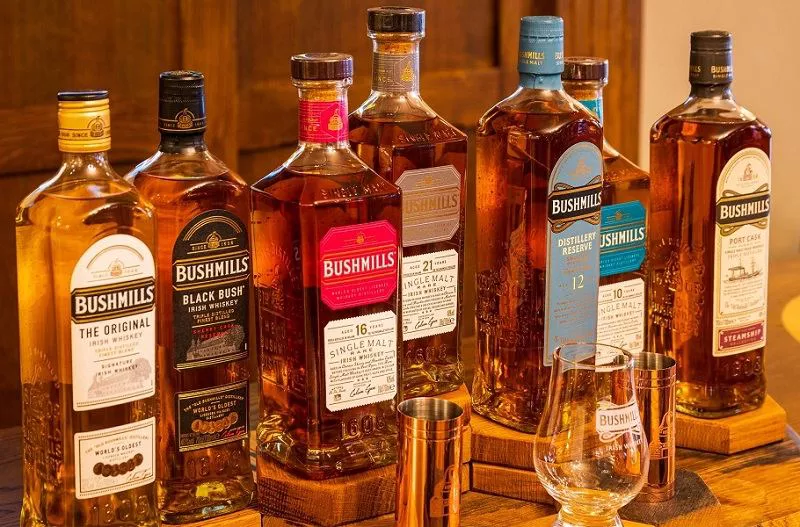Whiskey, with its rich history and diverse flavors, has captivated connoisseurs and enthusiasts for centuries. At the heart of this beloved spirit lies malt, an essential ingredient that contributes to its complexity and character. In this comprehensive exploration, we delve into the intricacies of malt in whiskey, unraveling its significance, production process, and impact on the final product.
Defining Malt in Whiskey
To comprehend the role of malt in whiskey, it is crucial to grasp its fundamental definition. Malt refers to germinated cereal grains, typically barley, that have been dried through a process known as malting. This technique involves soaking the grains in water to initiate germination, followed by drying with hot air to halt the process. The result is malted barley, a vital ingredient in various styles of whiskey, including Scotch, Irish, and single malt.
The Malting Process
Malting is a meticulous process that sets the foundation for the flavor profile of whiskey. It begins with selecting high-quality barley grains, renowned for their starch content and enzymatic potential. The grains are steeped in water to trigger germination, during which enzymes within the barley convert starches into fermentable sugars. This transformation is crucial for the subsequent fermentation and distillation stages.
Once germination reaches the desired level, the malted barley is carefully dried to preserve its enzymatic activity. Traditional methods involve spreading the grains on malting floors or using mechanical malting drums. Throughout drying, maltsters monitor temperature and airflow to ensure optimal conditions for enzyme retention. The resulting malted barley, known as “green malt,” serves as the primary ingredient in whiskey production.
Malt in Whiskey Production
In whiskey production, malt plays a central role in the mashing and fermentation processes. Malted barley undergoes milling to break down the grains and expose their inner contents, facilitating efficient extraction of sugars during mashing. The milled malt is then combined with hot water in a vessel known as a mash tun, where enzymatic action converts starches into fermentable sugars, creating a sweet liquid known as wort.
Following mashing, the wort is transferred to fermentation vessels, where yeast is introduced to initiate fermentation. Yeast consumes the sugars present in the wort, producing alcohol and other flavor compounds. The quality of malt significantly influences fermentation, as enzymatic activity and sugar content directly impact the yield and character of the resulting wash, the precursor to whiskey.
Impact on Flavor Profile
One of the most distinctive characteristics of malt in whiskey is its influence on flavor development. During malting, enzymatic activity generates a spectrum of flavor compounds, including sugars, amino acids, and phenols, which contribute to the complexity of the final product. Additionally, the degree of peat smoke exposure during drying imparts distinct smoky and earthy notes, particularly evident in certain styles of whiskey such as Islay Scotch.
Furthermore, malt selection, malting technique, and fermentation parameters exert profound effects on flavor profile variation among different whiskey expressions. Single malt whiskies, crafted from malted barley and produced at a single distillery, showcase the unique interplay of malt-derived flavors, reflecting the terroir, production methods, and maturation conditions.
Maturation and Malt Influence
The influence of malt extends beyond the production process and into the maturation phase, where whiskey interacts with wooden casks to develop its character over time. Malt-derived compounds, such as vanillin and tannins, interact with oak barrels, contributing to flavor evolution and complexity. The choice of cask type, duration of maturation, and environmental conditions further shape the final flavor profile, highlighting the enduring impact of malt in whiskey craftsmanship.
See Also: burgundy merlot color
Exploring Malt Variants
While barley is the traditional grain of choice for malt in whiskey production, modern distillers are increasingly experimenting with alternative grains to diversify flavor profiles and cater to evolving consumer preferences. Rye, wheat, and corn malts offer distinct flavor profiles characterized by spicy, nutty, and sweet notes, respectively, enriching the whiskey landscape with innovative expressions.
Additionally, specialty malts such as chocolate malt, roasted barley, and caramel malt contribute unique flavor nuances, enhancing complexity and depth in craft whiskey production. These variants allow distillers to push the boundaries of tradition while honoring the artistry and heritage of whiskey making.
The Art of Blending: Malt’s Role
In the realm of blended whiskey, malt assumes a pivotal role in achieving balance, harmony, and consistency across multiple batches. Master blenders meticulously select and blend malt whiskies with grain spirits to create signature blends that showcase a harmonious fusion of flavors and textures. Malt provides the backbone of complexity and character in blended expressions, elevating the overall drinking experience for enthusiasts worldwide.
Sustainability and Malt Production
As the whiskey industry embraces sustainability initiatives, the sourcing and production of malt have come under increased scrutiny. Distilleries are implementing eco-friendly practices, from sourcing locally grown barley to optimizing water and energy usage throughout the malting process. Furthermore, innovative technologies, such as recirculating air systems and biomass fuel, are reducing environmental impact and promoting sustainable malt production for future generations.
Conclusion
In conclusion, malt is a cornerstone of whiskey production, imbuing the spirit with distinctive flavors, aromas, and character. From the malting process to maturation and blending, malt influences every stage of whiskey craftsmanship, shaping the diverse array of expressions cherished by enthusiasts worldwide. As the whiskey landscape continues to evolve, the enduring legacy of malt remains integral to the spirit’s timeless allure and enduring appeal.
By unraveling the complexities of malt in whiskey, enthusiasts gain a deeper appreciation for the artistry, tradition, and innovation that define this beloved spirit. Whether sipped neat, on the rocks, or in a classic cocktail, whiskey enriched by malt invites exploration and celebration of its rich heritage and boundless possibilities.


